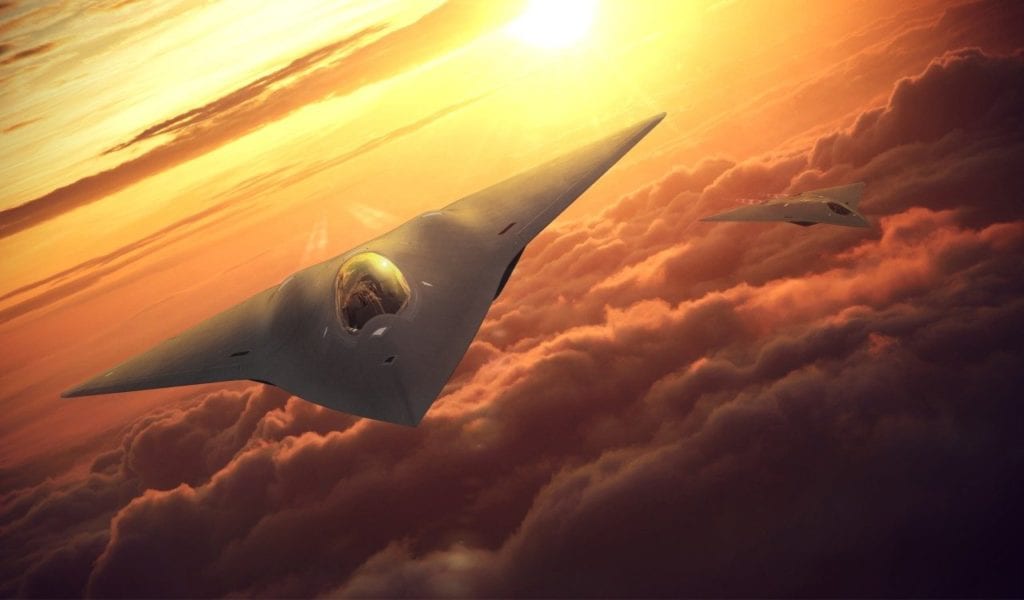
Concept of a future fighter aircraft for the Air Force by Lockheed Martin’s Skunk Works. (Image: Lockheed Martin)
The Air Force will soon have a business case to support a novel method to develop next-generation fighter jets more quickly and efficiently, the service’s acquisition czar said June 9.
Assistant Secretary for Acquisition, Technology and Logistics Will Roper first shared plans for the Next-Generation Air Dominance (NGAD) program at the Air Force Association’s Air, Space and Cyber Symposium in September 2019, which is meant to help the service harness new designing and manufacturing technologies that could lead to faster aircraft production.
Speaking to reporters in a Tuesday virtual event hosted by the Mitchell Institute, Roper said he expects an acquisition plan for the Digital Century Series, which would include NGAD, this summer. The Digital Century Series is intended to encompass efforts such as digital engineering, modular open systems architecture and agile software development, and hearkens back to the service’s 1950s Century Series model of building aircraft.
“The program is both about building a better aircraft, and also about building aircraft better,” Roper said Tuesday, noting that the NGAD team is “very close” to developing a new acquisition model.
The current strategy would have multiple companies simultaneously develop new fighter aircraft using what current technologies are available, he has previously shared. The Air Force would then down-select to a single vendor and procure a small number of fighter jets before going back to the drawing board in as little as five years.
“I want to be able to say whether the model of the Digital Century Series is, on the whole, cheaper than traditional acquisition,” Roper said Tuesday. “I think that it is, but we’re going to have to think about acquisition in its net assessment context.”
He acknowledged that the upfront cost of the Digital Century Series may be higher than traditional means, simply because multiple companies would be on contract to design multiple platforms at once. But one key element the NGAD team is studying is the current lifecycle cost of an Air Force fighter jet, and determine whether it makes sense to plan for shorter lifespans in the future, Roper noted. “How long we keep the aircraft is one of the variables that they’re weighing; how many years make sense?” he said. “It’s not two, three, four or five, but we don’t want it to be 30 either.”
If the cost to build an aircraft under the new Digital Century Series model is cheaper or breaks even with the service’s traditional acquisition process, “I’ll be exceptionally happy,” Roper said. “If it is more expensive – then I hope not exceptionally more – then we’re going to have to argue that it’s a better return on investment year by year for the warfighter.”
Last year, the Air Force established a program executive office (PEO) for advanced aircraft that would include NGAD as one of its priorities. This past April, the service reshuffled several PEOs housed at Wright-Patterson Air Force Base, Ohio, to separate the existing PEO Fighter/Bomber directorate. It will then create a new PEO Fighters and Advanced Aircraft office, and keep PEO Bombers on its own. Col. Dale White, who was selected last year to run the advanced aircraft PEO, will pin on his first star and assume responsibility for the new fighter and advanced aircraft office this month.
Crafting a sound business case for NGAD and the Digital Century Series will likely be critical to receiving support from lawmakers on the Hill. The Government Accountability Office and several senators have already criticized the Air Force for a “lack of business case” for another major priority, the Advanced Battle Management System (ABMS).
Service officials acknowledged last year that they needed to put more effort into educating lawmakers about NGAD as the concept is fleshed out. The Air Force requested $1 billion in research, development, test and evaluation (RDT&E) funds for NGAD in the fiscal year 2021 presidential budget request. Congress appropriated $905 million in the FY ’20 defense bill.